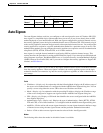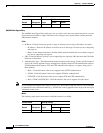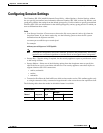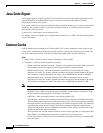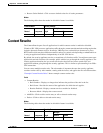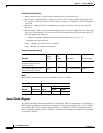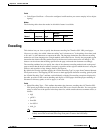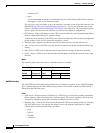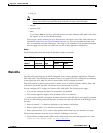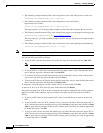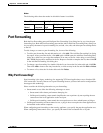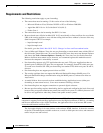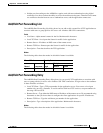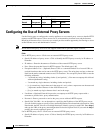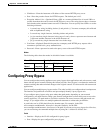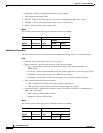
38-17
Cisco ASDM User Guide
OL-16647-01
Chapter 38 Clientless SSL VPN
Encoding
–
shift_jis
Note If you are using Japanese Shift_jis Character encoding, click Do not specify in the Font
Family area of the associated Select Page Font pane to remove the font family.
–
unicode
–
windows-1252
–
none
If you choose none or specify a value that the browser on the Clientless SSL VPN session does
not support, it uses its own default encoding.
You can type a string consisting of up to 40 characters, and equal to one of the valid character sets
identified in http://www.iana.org/assignments/character-sets. You can use either the name or the
alias of a character set listed on that page. The string is case-insensitive. The command interpreter
converts upper-case to lower-case when you save the security appliance configuration.
Modes
The following table shows the modes in which this feature is available:
Web ACLs
The Web ACLs table displays the filters configured on the security appliance applicable to Clientless
SSL VPN traffic. The table shows the name of each access control list (ACL), and below and indented
to the right of the ACL name, the access control entries (ACEs) assigned to the ACL.
Each ACL permits or denies access permits or denies access to specific networks, subnets, hosts, and
web servers. Each ACE specifies one rule that serves the function of the ACL.
You can configure ACLs to apply to Clientless SSL VPN traffic. The following rules apply:
• If you do not configure any filters, all connections are permitted.
• The security appliance supports only an inbound ACL on an interface.
• At the end of each ACL, an implicit, unwritten rule denies all traffic that is not explicitly permitted.
You can use the following wildcard characters to define more than one wildcard in the Webtype access
list entry:
• Enter an asterisk “*” to match no characters or any number of characters.
• Enter a question mark “?” to match any one character exactly.
• Enter square brackets “[]” to create a range operator that matches any one character in a range.
The following examples show how to use wildcards in Webtype access lists.
• The following example matches URLs such as http://www.cisco.com/ and http://wwz.caco.com/:
access-list test webtype permit url http://ww?.c*co*/
Firewall Mode Security Context
Routed Transparent Single
Multiple
Context System
• — • ——



